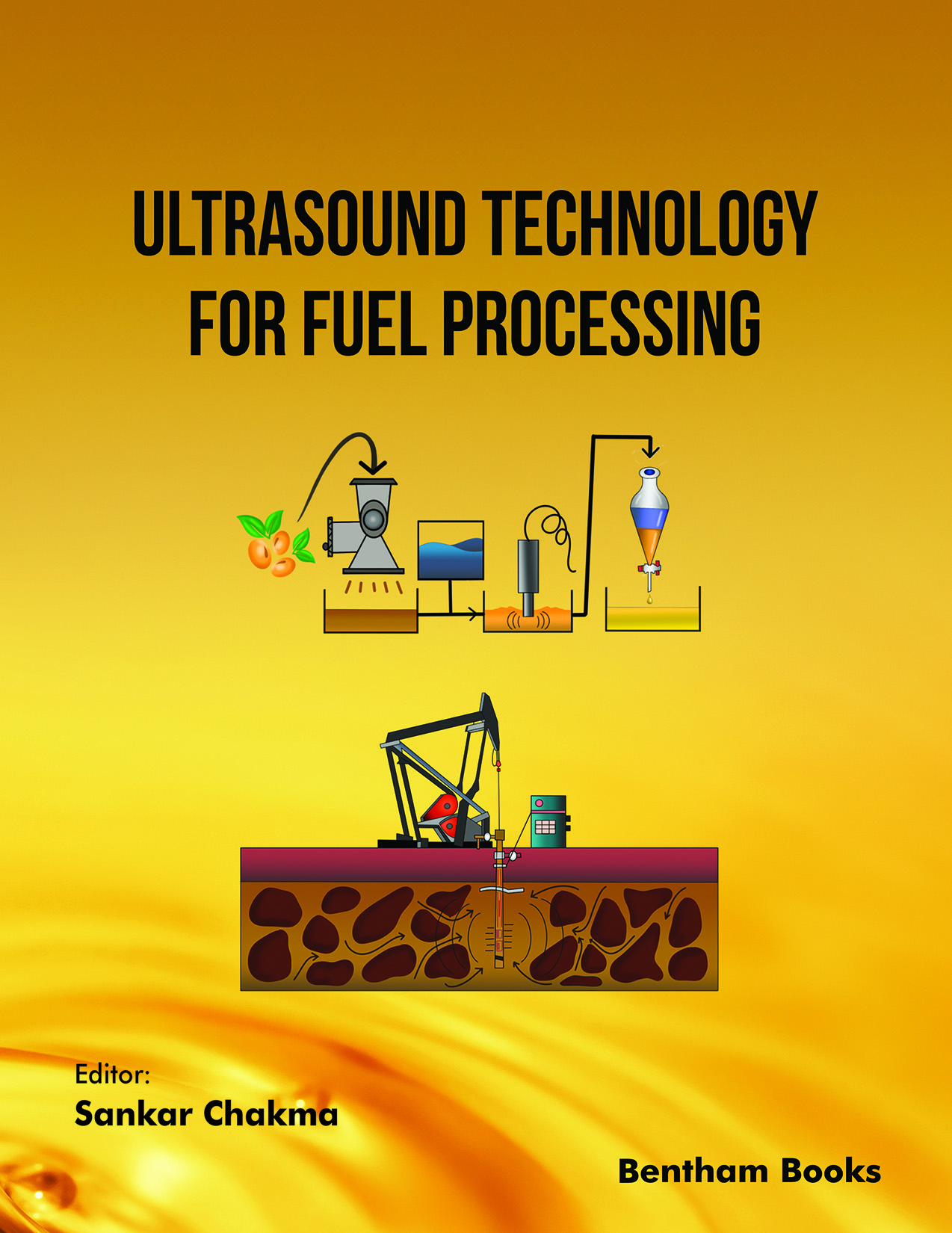Sonochemistry or the application of ultrasound waves is found to be effective for the intensification of physical, chemical, and biological processes through the cavitation phenomenon which induces chemical (radical generation) and physical (microturbulence, shockwaves,
etc.) effects in the medium. During the application of ultrasound waves, “hot-spot” is generated leading to extreme conditions in the system such as ~5000 K of temperature and ~1000 atm of pressure within the cavitation bubble. These extreme conditions during the chemical reaction result in the augmentation of the kinetics and overall process yield by several orders of magnitude. Using this technique, the synthesis of biofuels, pretreatment of biomass for biofuel production, and enhanced oil recovery or upgradation of oil are reported to be useful. In this book, the various aspects of ultrasound applications for fuel processing have been described which would be an excellent reference guide for researchers, faculty, and professionals in the field of fuel processing technology including bio-refinery and enhanced oil recovery.
Chapter 1 describes the basic concept and history of ultrasound, the origin of the acoustic wave, and its applications. It also provides information on various process parameters such as ultrasound frequency, intensity, system temperature, and dissolved content in the bubble which influence the cavitation threshold. The modeling and simulation of the radial motion of cavitation bubbles under rectified diffusion have also been covered in this chapter.
Chapter 2 provides information about green production of hydrogen gas through the sonolysis of water. It also describes the influence of various process parameters on hydrogen production with the help of experiments as well as numerical simulation.
Chapter 3 discusses the different pretreatment methods for the production of biofuels such as bioethanol, biogas, and biobutanol. The various pre-treatment methods are explained that are used to break down lignocellulosic biomass, making it more amenable to hydrolysis. In addition to more conventional physical, chemical and biological pretreatment methods, novel ‘green’ methods reported in the literature are also discussed. Furthermore, the various advantages and disadvantages associated with each method of pre-treatment are discussed, and possible solutions for overcoming negative impacts are suggested.
Chapters 4, 5 and 6 briefly describe the proper utilization of sewage sludge and biomass through the production of alternative and renewable energy. This chapter explains the potential of ultrasound-based techniques for the pretreatment of DSS to enhance biocrude production. It shows how the application of ultrasound can increase the COD solubilization, VS reduction, biogas production during AD, and the process yield of lipid extraction for biodiesel production including the promotion of bioethanol production. The application of ultrasound helps extract lipids from microbial biomass within a short span of processing time. The usage of ultrasonication in the fermentation process can result in enhanced oxygen transfer for aerobic culture, homogenization of biomass for the reduction in clump formation, and faster substrate transfer to biomass.
Chapter 7 summarizes the intensification of biodiesel synthesis and discusses overcoming the heat and mass transfer limitation for the transesterification process. It describes the micro-emulsification and high rate of micro-streaming velocities associated with products from the interaction of ultrasound with the liquid medium, which are highly useful for reducing the mass transfer barrier in heterogeneous phases. The synergy of microwave and ultrasound may help enhance the processing rate on a multi-fold basis compared to the individual effect.
Chapter 8 reviews the basic mechanism of intensified approaches using cavitation, and fundamentals of sonochemical reactors, and finally presents important designs and operational guidelines for maximizing biodiesel yields. In this chapter, various operating parameters of AC and HC have been discussed emphasizing the effect and importance of various parameters in the design of AC and HC reactors.
Chapters 9 and 10 describe the enhanced oil recovery and up-gradation of crude oil with the application of ultrasound and cavitation. The major limitations and techniques for eliminating these barriers by the application of novel techniques of ultrasonic waves have been discussed. The present chapter overviews the ultrasound-assisted cavitation to intensify the cracking of asphaltenes and other heavy hydrocarbon molecules present in the vacuum residual feedstock.
Chapters 11 and 12 briefly describe the different sono-hybrid techniques of ultrasound and cavitation for the removal of sulfur compounds from liquid fuels. These chapters present a critical account of research in different facets of ultrasound-assisted chemical- and bio-desulfurization processes. Concurrent analysis of numerical and experimental results on desulfurization using bio-catalyst and chemical catalysts gives more insight into the actual mechanism of ultrasound on microbial and enzymatic desulfurization processes as well as chemical desulfurization processes.
Sankar Chakma
Department of Chemical Engineering
Indian Institute of Science Education and Research Bhopal
Bhopal, 462 066, Madhya Pradesh, India

